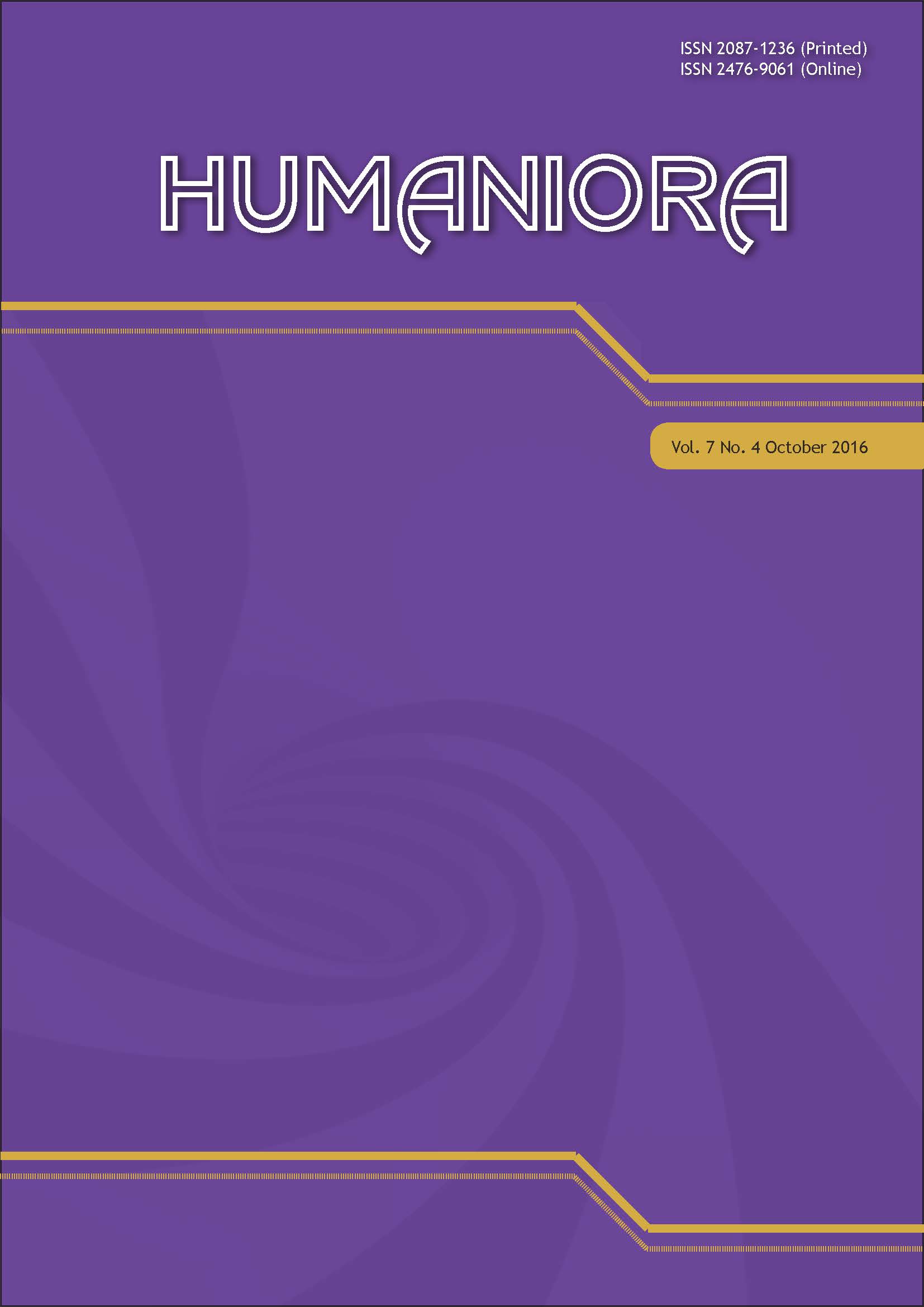The Role of Pitamaha in Balinese Artistic Transformation: A Comparison Between Kamasan and Gusti Nyoman Lempad Artistic Style
DOI:
https://doi.org/10.21512/humaniora.v7i4.3599Keywords:
balinese painting, artistive transformation, kamasan, Pita Maha, Gusti Nyoman LempadAbstract
The Balinese artistic traditions of wayang style paintings that were known as Kamasan lasts for generations occurred some changes. Following the collapse of Balinese traditional court, the arrival of western artists and scholars, Pita Maha association was established to prevent the excess of commercialism to Balinese arts and crafts. A new generation of artists started to emerge, not only they adopted western painting techniques taught by their western ‘gurus’, but they also showed freedom of self-expressions in their works; one considered as a genius was Gusti Nyoman Lempad. The aim of this research was to compare the artistic transformation before Pita Maha and after Pita Maha. It was done by analyzing examples of Kamasan styled painting and works of Lempad through the qualitative method with a case study approach. The analyses show the differences between both styles regarding themes, iconographies, human figures proportions and composition, presentation of narrative stories, decorative elements and availability of artists’ signature in the paintings. It shows the artistic transformation of Balinese art. Through Pita Maha, Balinese starts to adopt western painting techniques, while preserving the cultural inheritance and symbolic value of traditional art in addition to their economic value.
Â
Â
References
Adnyana, W. K. (2016, 14th Feb). Catatan Budaya: Revolusi Seni Lukis Baru 1930-an. Koran Kompas, 26.
Creswell, J. (2009). Research Design: Qualitative, Quantitative and Mixed Methods Approaches. California, USA: Sage Publications.
Geertz, H. (2015, 5th Nov). How Lempad Change the Course of Art in Bali. Apollo International Art Magazine. Retrieved July 28th 2016 from http://www.apollo-magazine.com/review-lempad-of-bali/
Holt, C. (2000). Melacak Jejak Perkembangan Seni di Indonesia. Bandung: Arti.line.
Nilotama, S. K. L., & Santosa, I. (2012). Konsep Simbolik pada Lukisan Wayang Gaya Kamasan Dikaitkan dengan Konsteks Arsitektur Bali. Jurnal Dimensi, 9 (2), 139-161.
Ramseyer, U. (2002). The Art and Culture of Bali. Basel: Museum der Kulturen Basel, Schwabe & Co.AG.
Sachari, A. (2005). Pengantar Metodologi Penelitian Budaya Rupa: Desain, Arsitektur, Seni Rupa dan Kriya. Jakarta: Erlangga.
Soemantri, H. (Ed.). (1998). Indonesian Heritage vol. 7: Visual Art. Singapore: Grolier.
Vickers, A. (2012). Balinese Art: Paintings and Drawings of Bali 1800-2010. Hong Kong: Tutle.
Downloads
Published
How to Cite
Issue
Section
License
Authors who publish with this journal agree to the following terms:
a. Authors retain copyright and grant the journal right of first publication with the work simultaneously licensed under a Creative Commons Attribution License - Share Alike that allows others to share the work with an acknowledgment of the work's authorship and initial publication in this journal.
b. Authors are able to enter into separate, additional contractual arrangements for the non-exclusive distribution of the journal's published version of the work (e.g., post it to an institutional repository or publish it in a book), with an acknowledgment of its initial publication in this journal.
c. Authors are permitted and encouraged to post their work online (e.g., in institutional repositories or on their website) prior to and during the submission process, as it can lead to productive exchanges, as well as earlier and greater citation of published work.
USER RIGHTS
All articles published Open Access will be immediately and permanently free for everyone to read and download. We are continuously working with our author communities to select the best choice of license options, currently being defined for this journal as follows: Creative Commons Attribution-Share Alike (CC BY-SA)




















